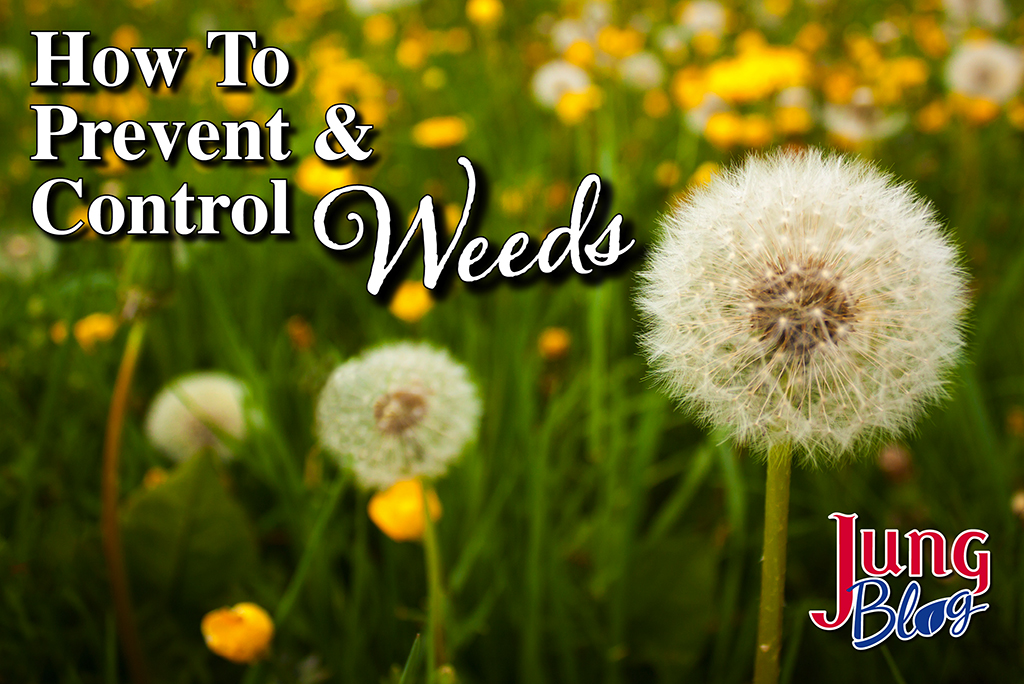
Each year is different in the garden, but you can always count on weeds showing up. The definition of a weed is simply this: A plant that is out of place. This means you can have good plants that become weeds or are always considered weeds. An example is wild violets, which are desirable natives for some gardeners, but a weed for others. Today we’ll be looking at plants considered weeds by most gardeners, along with information on managing them.
We’ll always encounter weeds, but we can minimize their presence in the garden by taking steps to make the landscape less desirable for them.
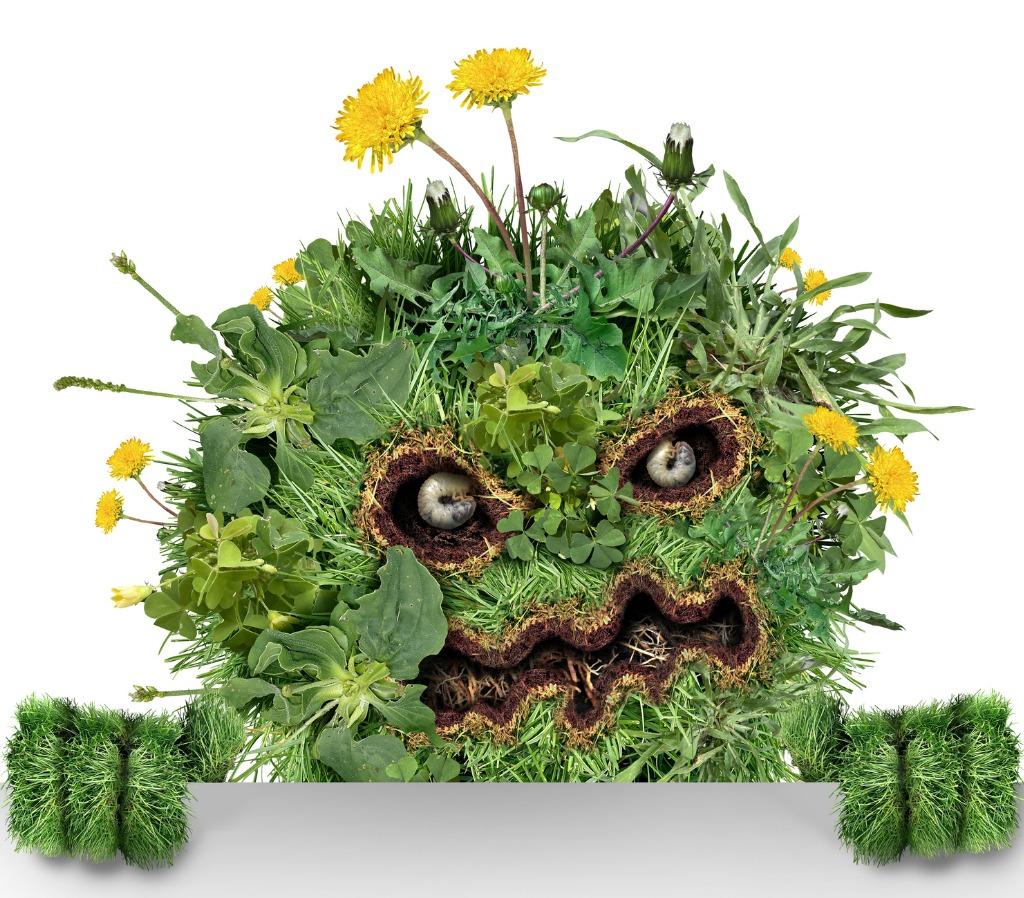
Prevention
Mulch is an excellent deterrent for weeds, as it blocks sunlight to the soil and keeps weeds from germinating. Your mulch layer should be at least 2-3 inches to prevent weed growth. It’s important to know that organic mulch, like wood, will decompose over time and become soil, which means you’ll need to replenish mulch every few years. The extra soil layer from the mulch is a great source of organic matter for your garden.
In spring, you can also use pre-emergent herbicides, like Preen or corn gluten, to prevent weeds from germinating.
Bare soil encourages weeds to grow, so keeping your landscape full of desirable plants will shade the surrounding soil and discourage weeds.
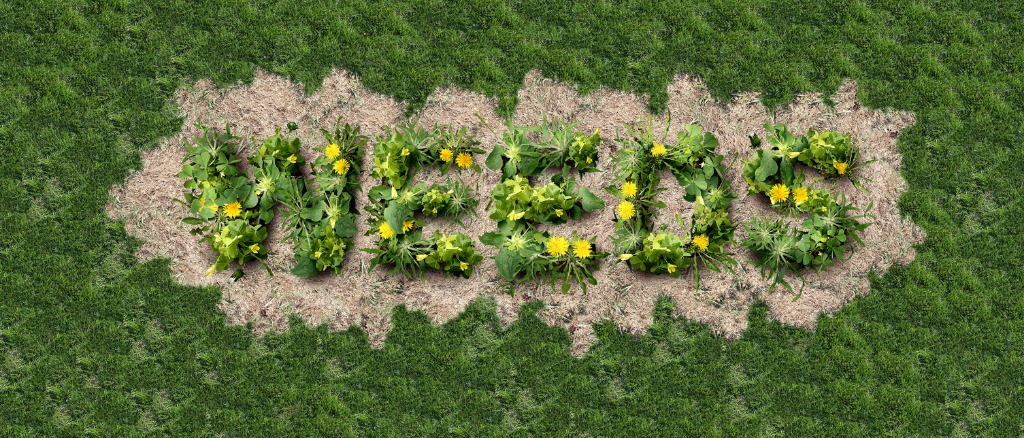
Annual vs. Perennial weeds
Weeds are typically annuals (one-year life cycle) or perennials (three years or longer life cycle). However, they can also be biennial (two-year life cycle). Understanding the different life cycles will help you correctly identify and manage weeds.
Annual weeds germinate in spring or summer, then produce seeds in that same growing season. The key to stopping their spread is to prevent seeds from falling onto the soil, so you’ll want to eliminate annual weeds when they are young. Fortunately, they only live for one season, making them easier to control than perennial weeds. Examples of annual weeds include crabgrass, chickweed, and purslane.
Perennial weeds are more complex and challenging. These weeds are often spread by seed and underground structures that grow yearly. Some examples of perennial weeds are dandelions, creeping charlie, yellow wood sorrel, and yellow nutsedge.
Biennial weeds will produce leaves in their first year of growth and flowers in the second year. After they make seeds, the plants die. Preventing seed production is critical for biennials.
Here are some common weeds in your landscape, and tips for controlling them.
Annual Weeds
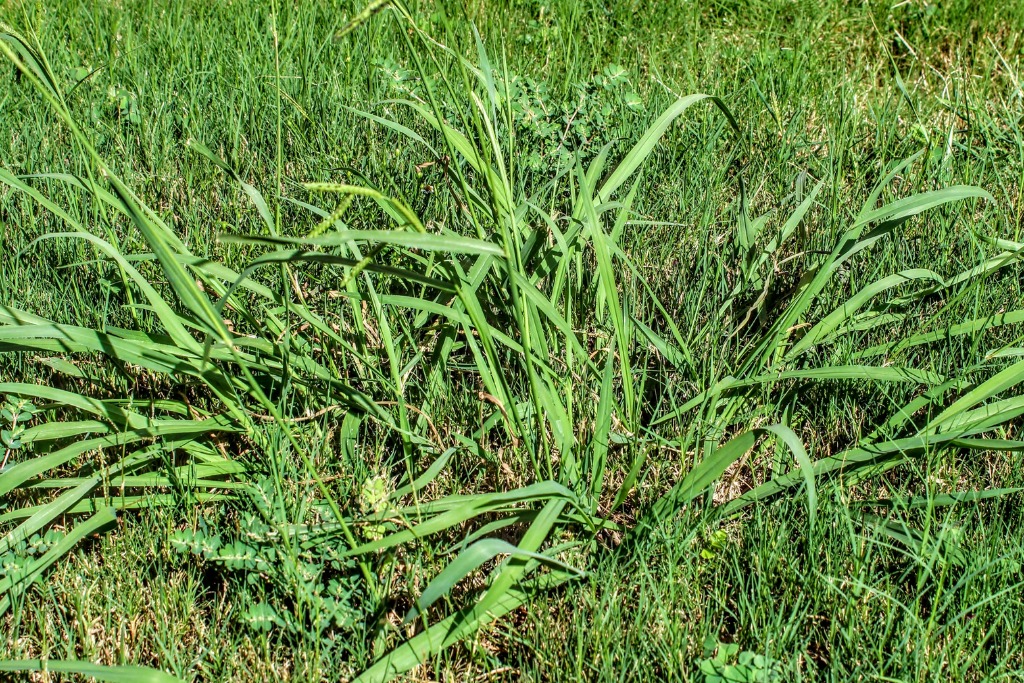
Crabgrass
Crabgrass has a low and spreading growth habit but can grow up to 2 feet tall. The leaves have tiny hairs, and the flowers have three or more spikes.
Control – Because it’s annual, you can prevent it using a pre-emergent herbicide in spring. A good rule of thumb is to spread the pre-emergent when the forsythia is in full bloom or when soil temperatures reach 50°F. Crabgrass has shallow roots you can easily pull so that existing plants can be hand pulled, or you can apply an herbicide.
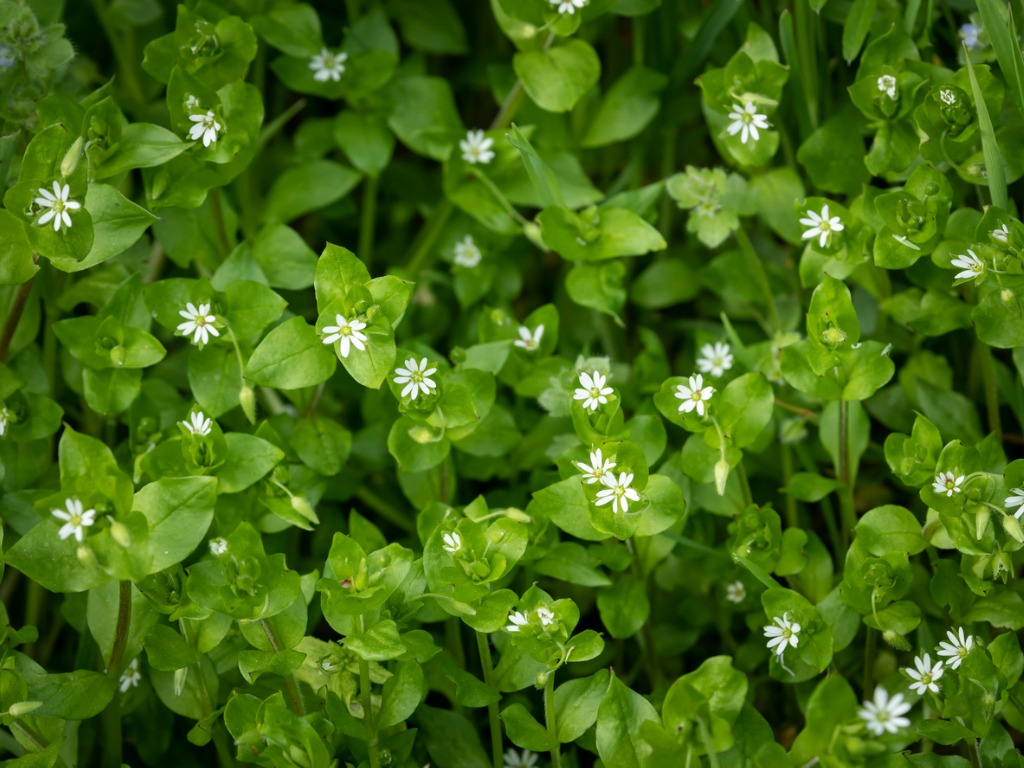
Common Chickweed
Chickweed is low growing annual that forms a dense mat, often in moist, shady areas. The small white flowers have five petals that grow on the end of the stem. Its roots are shallow and fibrous.
Control – This annual weed germinates in early spring or fall, then flowers shortly afterward. The small leaves and white flowers trail along the ground, sometimes making it difficult to spot. The key to managing this weed is spraying or hand-pulling it before it flowers. Chickweed will sometimes die back in summer if the soil is warm and dry.
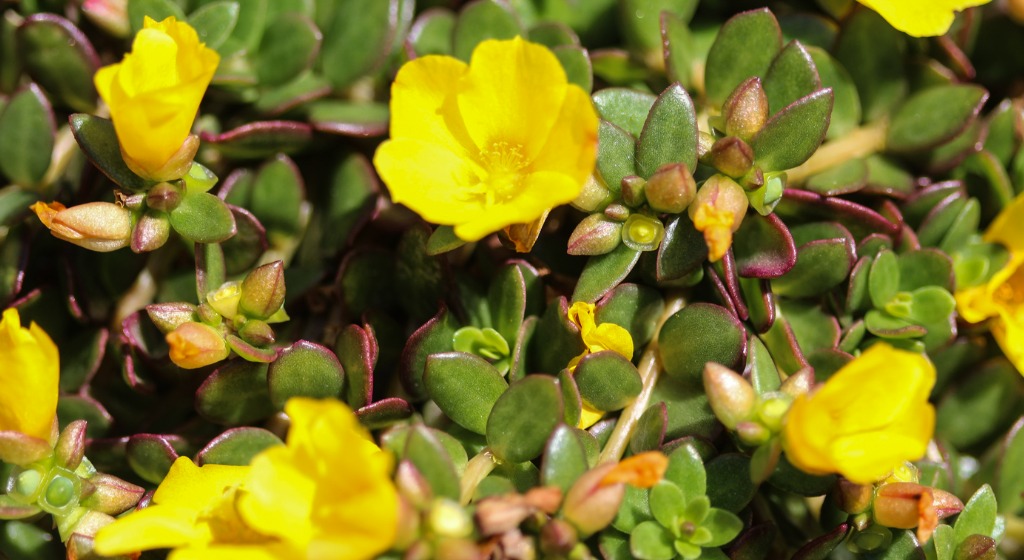
Purslane
Purslane is a low-growing succulent with paddle-shaped leaves that are popular for salads in parts of the world. You’ll often find them in compact soil near sidewalks and driveways. It has small yellow flowers in summer.
Control – You can easily hand-pull or spray them with an herbicide. However, some gardeners will grow them for their edible leaves.
Perennials Weeds
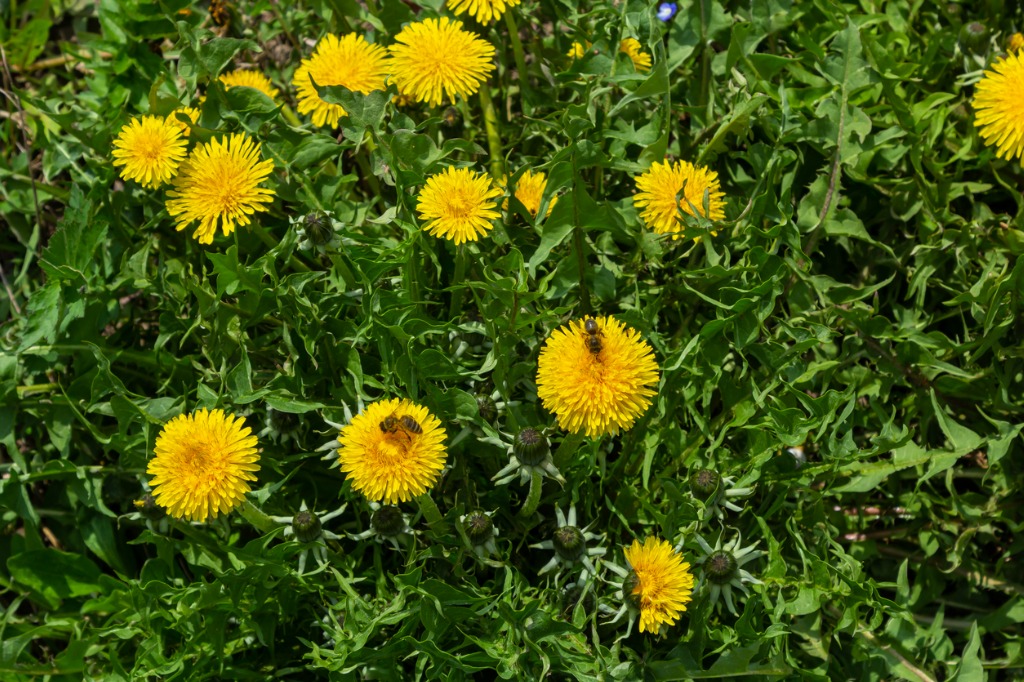
Dandelions
Dandelions are common plants and are often considered a weed, though some gardeners like them for the pollinators in early spring. They are easy to recognize by their bright yellow flowers, puffy seedheads, and rosette of deeply lobed leaves.
Control – Dandelions have deep taproots, so do your best to dig out the entire root when hand pulling (weeding tools are often required). You can also spray them with an herbicide.
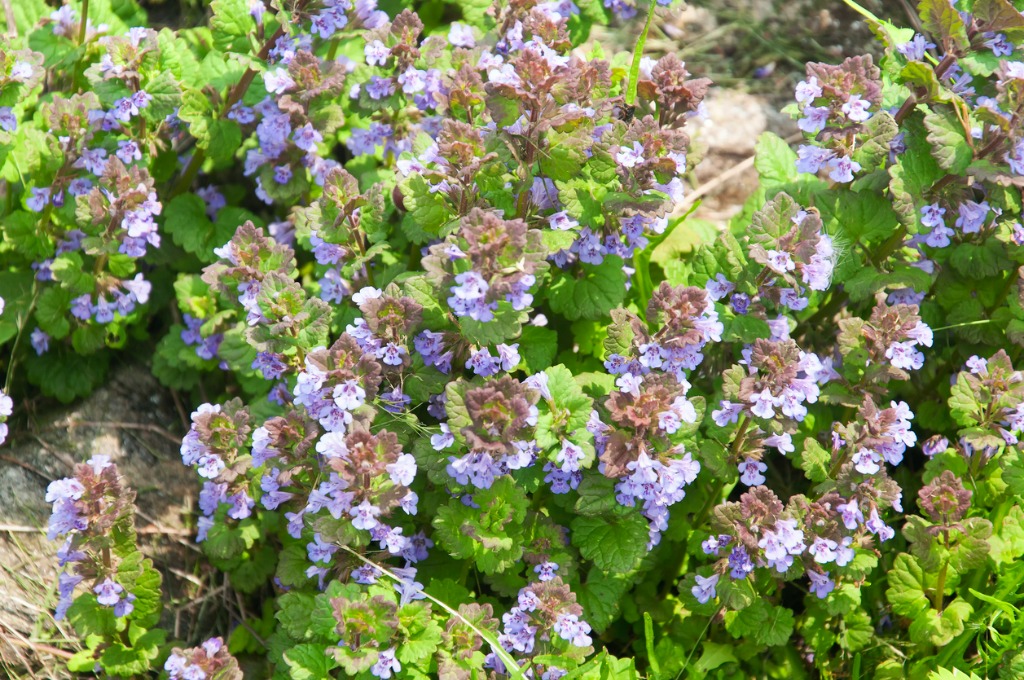
Creeping Charlie
Creeping Charlie is a common weed that has stems that creep along the ground to form a dense carpet of foliage. Its leaves are round and produce a minty odor. Purple flowers are produced in late spring and summer to make the plant stand out. You can often find it growing in moist, shady locations.
Control – Herbicides are the quickest and most effective way to remove creeping charlie. If you have shady parts of your landscape, consider planting desirable groundcovers to keep out Creeping Charlie. You may need to eliminate a whole bed of plants for severe infestations and start over with fresh plantings.
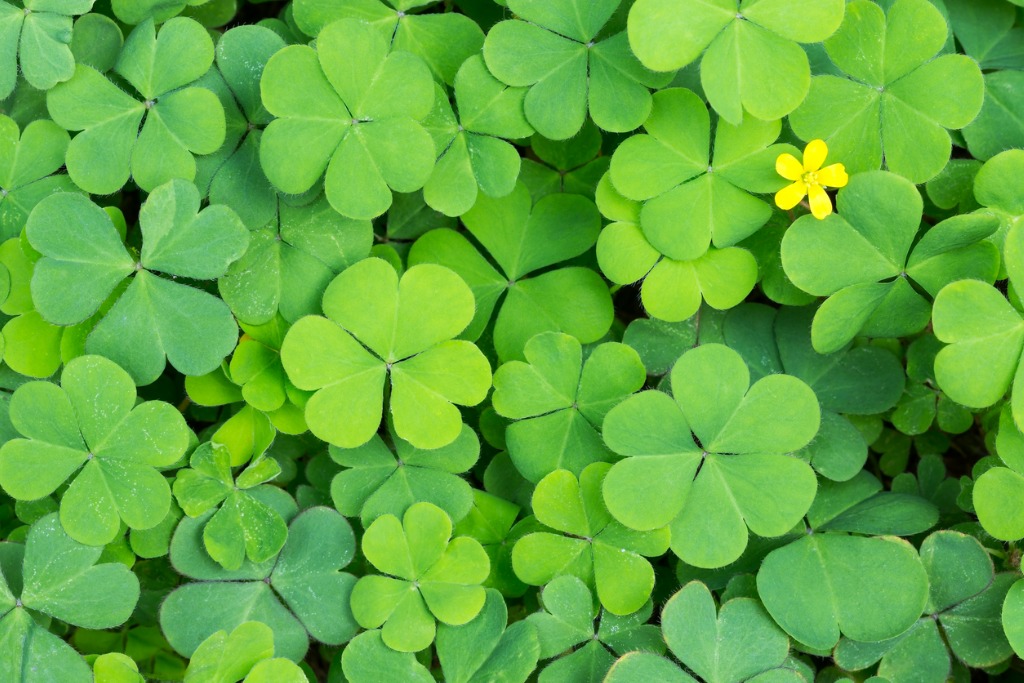
Yellow Wood Sorrel
Yellow Wood Sorrel is a small, upright growing annual with leaves that resemble clovers. Eventually, it produces small, yellow flowers as the plant matures. You can often find them in partial shade but also in full sun.
Control – Hand pulling, or pre-emergent herbicides in early spring, is the most effective control method.
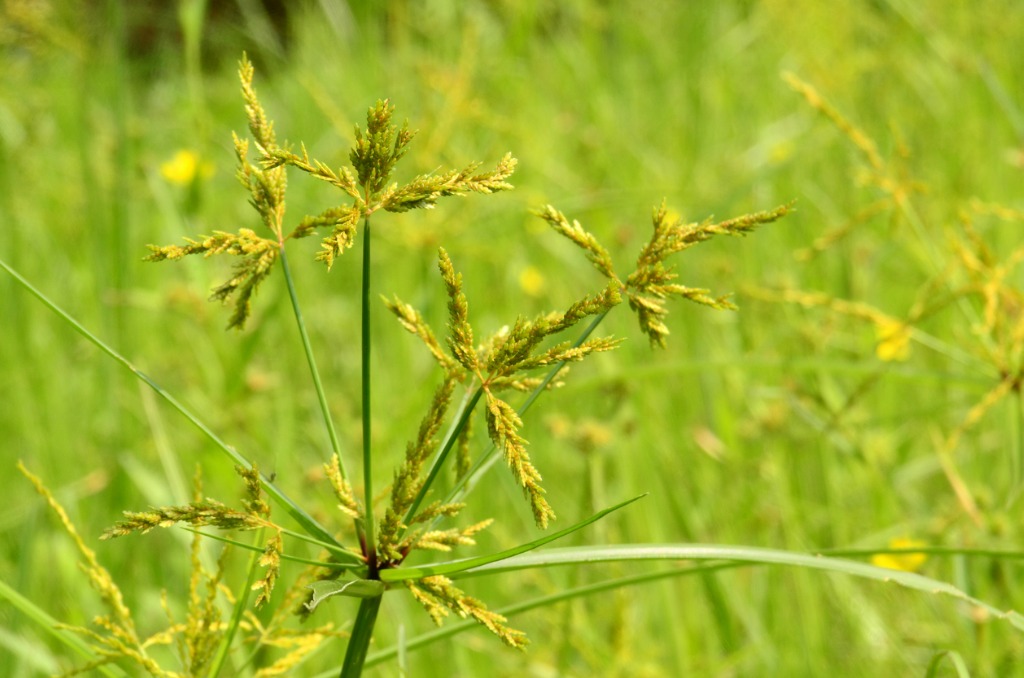
Yellow Nutsedge
The nutsedge leaves resemble grass, but the stems have a distinct triangle shape, especially when you cut them. You’ll often see these weeds spread by underground runners in moist areas. In summer, the plants produce golden or yellow flower spikes.
Control – Herbicides are best, especially for large areas. However, small populations can be controlled by hand pulling.

These are only a few weeds you may encounter in your landscape. It’s good to remember that weeds come in many shapes and forms, making it difficult to identify them.
If you have any questions about a weed you’ve found in your landscape, please reach out to Jung Seed with photos and a description, if possible. Ultimately, the best way to manage weeds is to prevent them and observe what’s happening in your landscape.
Other Recommended Reading
- Controlling Common Vegetable Garden Pests
- 8 Useful Tools For Your Garden
- Understanding Plant Diseases
- Demystifying Fungicides
- Horticultural Oil For Pest Control
At Jung Seed Co, we strive to be your go-to guide for all your gardening needs. Our YouTube channel Jung Garden Center has a variety of videos where our experts provide gardening tips for all levels of gardeners. When you need reliable gardening advice, turn to the trusted experts at Jung.
If you are in the Wisconsin area, please visit us at one of our Jung Garden Center locations for all your gardening needs. Otherwise, you can browse our website. To receive info on new products, exclusive deals, and specials, be sure to sign up for our weekly email. Join our Facebook page, to discuss all things gardening!
About the Author: Matthew Olson is a professional horticulturist and garden writer. He has a bachelor’s degree in horticulture from UW-River Falls and is a certified professional with the Minnesota Nursery and Landscape Association. His enthusiasm for plants and the outdoors brought him to the green industry. He regularly writes articles about gardening for both gardeners and industry professionals. He can be reached at matt@mattolsonhorticulture.com.